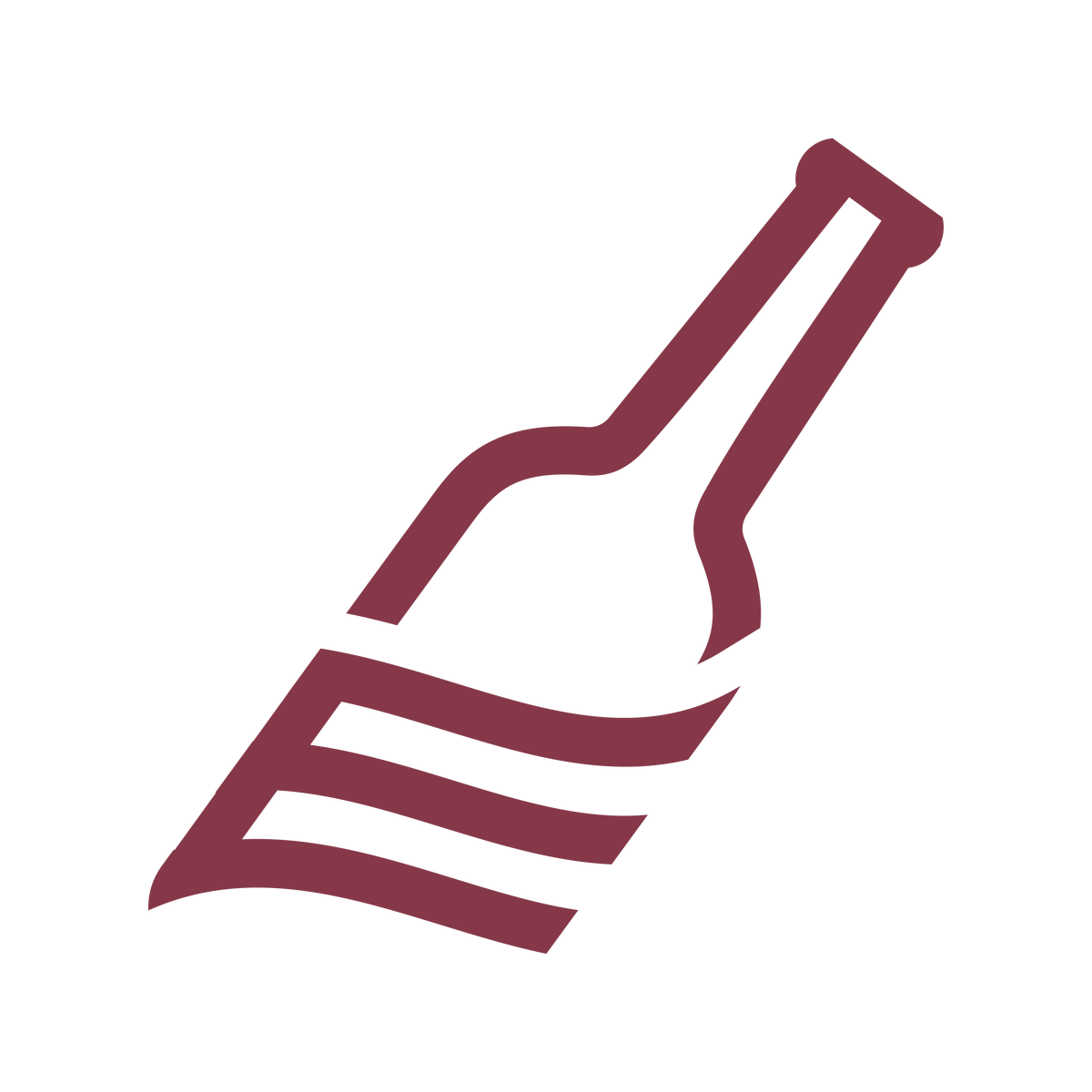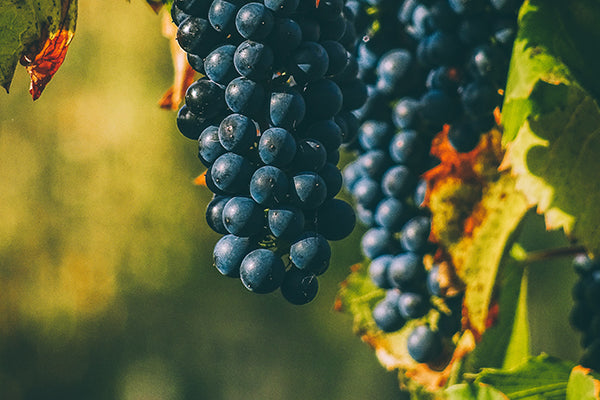Few places in the world offer a better opportunity to explore the impact of terroir on a single grape than Beaujolais and gamay.
This might come as a surprise to those left unimpressed by the pageantry of Beaujolais Nouveau—the easy-drinking table wine harvested, vinified, and sold within a matter of months each harvest—a style that has regrettably become synonymous with the region. But we’re not talking about Bojo Nouveau. We’re talking about the more complex wines made from the top sites. We are talking about Cru Beaujolais.
What is Cru Beaujolais?

Concentrated in the northern part of the region, in an area that spans a mere 15 miles, ten distinct growing areas have been singled out for producing wines of unmatched quality. These 10 crus present unique combinations of soil, topography, elevation, climate, and sun exposure that inspire the top winemakers to make wines of true expression.
To do so, many winemakers employ the region's unique winemaking style—carbonic maceration. Fermentation happens within the grapes of whole, uncrushed bunches in a carbon dioxide rich environment. This reduces the juice’s exposure to tannin-rich skin, seeds, and pulp. The result? Wines that are fresh, spirited, and aromatic.
The wines of Cru Beaujolais range from ethereal and fragrant to rich and brooding. But all offer a purity and clarity of site. It’s the reason Cru Beaujolais is a favorite of wine insiders—living proof of terroir.
Let this guide be your starting point on your journey through the Crus of Beaujolais. Read to learn more and discover what makes these wines special. The best way to learn? Grab a few bottles and host a side-by-side tasting.
Buy: Cru Beaujolais Wine

The 10 Crus of Beaujolais
Saint-Amour (sand-amoor)
The romantic name of the most northerly cru has been a blessing and a curse. Saint-Amour sells one third of its annual production on Valentine’s Day each year. The appellation has a specific rule permitting the early release of wine (a month and a half earlier than the other crus) to take advantage of the famous holiday. The majority of winegrowers sell their fruit to commercial negociants who bottle, market, and sell the wine specifically for supermarkets and the high volume export market. The majority of wines from Saint-Amour are not good, mainly because they don’t have to be.
Juliénas (julien-ah)
The birthplace of vine growing in the Beaujolais region, Juliénas dates back 2000 years to the time of Julius Caesar (hence the name). Growers in the region speak to the highly variable soil in this cru with a mix of granite, alluvial deposits, sand, and clay.
The wines lean towards the earthier and weighter side. The top producers of Beaujolais—such as Marcel Lapierre—have started to harvest and bottle wine from this area.
Chénas (shay-nah)
At one square mile in total planted area, Chenas is the smallest cru and has the lowest annual production. The rugged northeast slopes of the appellation were once filled with dense oak forests but were replanted with vines by the order of Philippe V.
The wines of Chenás are sturdier with a mineral intensity that mirror the wines from Moulin-Á-Vent. The wines often feature notes of spice and wood (the influence of the oak trees, possibly) and have been described as “a bouquet of flowers in a basket of velvet.”
Moulin-Á-Vent (moolan-a-vuh)
The name comes from a 15th century windmill that sits on a hill at the center of this cru. It's more common nickname? The King of Beaujolais.
The wines of this cru are the most powerful, structured, and longest-lived among the ten crus. The presence of manganese and iron in the soil reduces yields and increases concentration. With a few years of age, the wines of Moulin-Á-Vent draw comparisons to Burgundy or Northern Rhone as the wines take on notes of dried fruits, earth, meat, and spice. The wines of Moulin-Á-Vent have real ageing potential, lasting for 20+ years.
Where the wines from the other crus have an immediacy to their enjoyment, the wines of Moulin-Á-Vent demand a bit more patience and contemplation. The reward is a wine that slowly unravels, revealing its charms.
Pro Tip: Sneak in a bottle of aged Moulin-Á-Vent to your next Burgundy tasting. See if anyone can tell.

Fleurie (flury)
The wines of Fleurie represent the spirit of the region—lively, fruity, silky. As the name suggests, the wines of this cru offer intriguing notes of iris, violet, and rose. The combination of the higher elevation, sloped vineyards, and pink granite soil create aromatic and velvety wines. These wines have classic floral notes as the name suggests, but they also offer a strong undertone of minerality.
Chiroubles (she-ruble)
The Chiroubles cru offers the most dramatic growing conditions with the highest elevation, steepest slopes, and coolest temperatures. The result? Fruit that is harvested a week later than all other crus, and wines of incredible elegance, finesse, and minerality.
Many consider the growers of this cru heroic for the physical demands of working such steep and rugged hills.
Morgon (mor-gone)
The wines of Morgon are the closest cru to the full-bodied wines of Moulin-A-Vent. They have the textbook freshness of Beaujolais, but with fleshier, riper fruit characters. With age, the wines of Morgon take on earthy characteristics reminiscent of Pinot Noir.
Morgon has 6 lieux-dits (small geographic areas, or microsites)—Les Charmes, La Côte du Py, les Micouds, les Grands Cras, Corcelette, and Doubt—that are often labelled on single vineyard wines.
Morgon is also blessed with a concentration of the region’s top producers, including the legendary Gang of Four—Marcel Lapierre, Jean Foillard, Jean-Paul Thévenet, and Guy Breton—who brought Cru Beajolais to international fame. The next generation of these family winemakers continue the excellence of the cru.
Réginé (rehn-yay)
Réginé reached cru status in 1988, making it the youngest of the crus. Many Réginé producers use organic and biodynamic vine growing and winemaking techniques. The wines shade towards the lighter and fresher side.
Brouilly (broo-yee)
The largest and most southern cru, Brouilly covers 20 percent of the Beaujolais cru area. It extends southward to the end of the 10 crus and connects to the region devoted to Beaujolais-Villages.
The wines of Brouilly are the most versatile, offering the textbook freshness and liveliness of Beaujolais. The wines skew towards the simpler side, with growing complexity in the hilled areas of the Côte de Brouilly.
Côte de Brouilly (coat-de-broo-yee)
Côte translates to hillside in French, and as the name suggests, Côte Brouilly is the sloped section of the larger Brouilly area. The sloped vineyards and soil rich in schist and volcanic stone lends an elegance to the wines. Superior drainage, more versatile soil, and better sun exposure create wines of greater complexity than the flatlands.
 Where to Buy Cru Beaujolais Wine
Where to Buy Cru Beaujolais Wine
With tiny allocations and growing global demand, the wines of Cru Beaujolais are difficult to source. Thankfully, our partnerships with the top suppliers in Europe grant us access to the best.
Buy: Cru Beaujolais Wine


